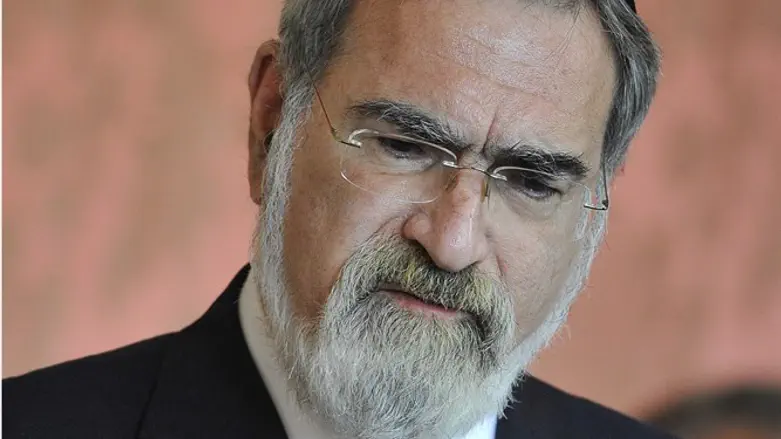
INTRODUCTION:
SHEMINI ATZERET is a strange day in the Jewish calendar. It is described as the eighth day, and thus part of Succot, but it is also designated by a name of its own, Atzeret. Is it, or is it not, a separate festival in its own right? It seems to be both. How are we to understand this?
What guided the Sages was the detail that whereas on the seven days of Succot seventy young bulls were offered in the Temple, on Atzeret, the eighth day, there was only one. Connecting this to Zechariah’s prophecy that in the Messianic time all nations would celebrate Succot, they concluded that the seventy sacrifices of Succot represented the seventy nations of the world as described in Chapter 10 of Bereishit. Even though Zechariah’s vision had not yet been realised, it was as if all humanity were in some sense present in Jerusalem on the festival, and sacrifices were made on their behalf. On the eighth day, as they were leaving, God was inviting the Jewish people to a small private reception. The word Atzeret itself was interpreted to mean, “Stop, stay a while.” Shemini Atzeret was private time between God and His people. It was a day of particularity (between God and His people) after the universality of the seven days of Succot (a festival for all the nations, at least in Messianic times).
In February 1997, then-President of the State of Israel, Ezer Weizman, paid the first, and thus far the only, state visit to Britain as the guest of Her Majesty the Queen. The custom is that on the first night of such a visit the Queen hosts a state banquet at Buckingham Palace. It was, for the Jews present, a unique and moving moment to hear Hatikvah played in the banqueting hall of the Palace, and to hear the Queen propose a toast to the President with the word lechayim.
There is a protocol for such visits. Present are many representative figures, ambassadors, members of the Government and other members of the Royal Family. At the end of the evening, after most of the guests have taken their leave, there is a small and intimate gathering of just a few individuals – on that occasion the Queen, Prince Philip, the Queen Mother, the Prime Minister and a few others – for a more relaxed and personal conversation with the guest of honour. It was this kind of occasion, with its Royal protocol, that best illustrates how the Sages understood Shemini Atzeret.
SIMCHAT TORAH (celebrated the day after Shemini Atzeret in the Diaspora, and combined into one day in Israel as there is only one day of Yom Tov) is unique among festivals. It is not mentioned in the Torah, nor in the Talmud. Unlike Purim and Chanukah, it was not formalised by any decision on the part of the religious authorities, nor does it commemorate any historical deliverance. It grew from the grassroots, slowly developing over time.
It was born in Babylon, probably at the end of the period of the Amora’im, the rabbis of the Talmud, in the fifth or sixth century. The Babylonian custom – now universal – was to divide the Torah into fifty-four portions to be read in the course of a year (in Israel there was a threeor three-and-a-half-year cycle). On the second day of Shemini Atzeret in Babylon (there was no second day in Israel), the custom was to read the last portion of the Torah, in which Moshe blessed the nation at the end of his life.
It had long been the custom to make a celebration on completing a section of study, a Talmudic tractate, or an order of the Mishnah (Shabbat 118b)
Thus, the custom evolved to make a celebration at the completion of the Mosaic books, and it was considered a great honour to be called to the Torah for this last portion. The celebration became known as Simchat Torah.
Points to Ponder
1 What themes of Succot are universal and relevant to all of humanity?
2Does Shemini Atzeret mean that God loves the Jewish people more than His other creations?
3 Do you think that the source of Simchat Torah (not the Torah, or the Talmud, but the people) makes it less or more meaningful as a chag?
Note: This is only the introduction to Rabbi Sack's family-oriented feature for the holliday. Be sure to click the link below for much, much more enrichment for the whole family, including what the holiday teaches us today, ten facts for youngsters about the holiday, a hassidic tale with a message and even a fun quiz. You can print it before the holiday for optimal use as a resource.
https://rabbisacks.org/wp-content/uploads/2020/10/CC-Shemini-Atzeret-Simchat-Torah-FINAL.pdf
